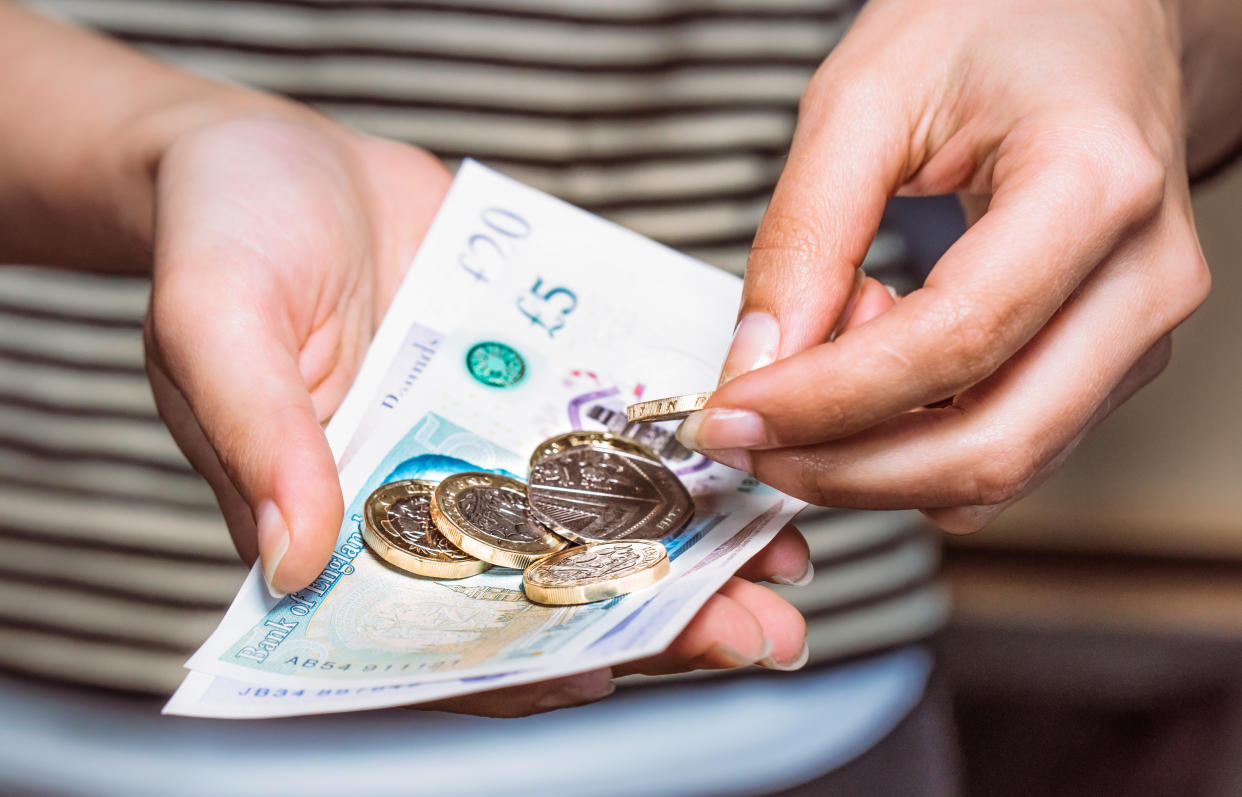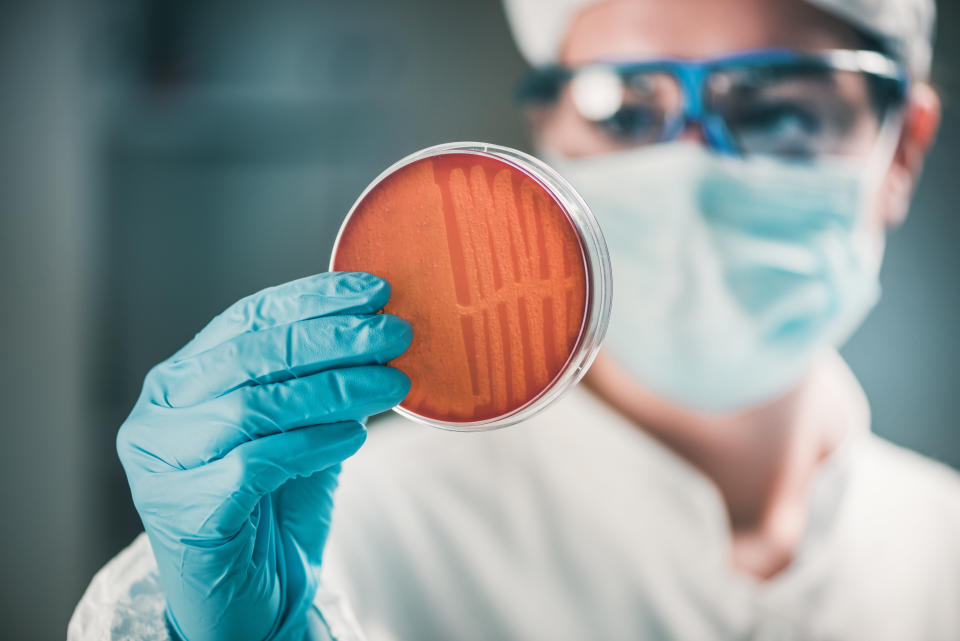Bank notes 'carry more bacteria than coins'

Bank notes may be at greater risk of bacterial contamination than coins, research suggests.
Scientists from the University Medical Center Hamburg-Eppendorf in Germany compared 5 cent, 50 cent and €1 coins to €5 bank notes.
A gloved hand “picked up” the bacteria Enterococcus faecium – which can cause infection of the heart’s lining, and Staphylococcus aureus – which can lead to pneumonia.
The coins and bank notes were assessed for microbes 24 hours after being touched by the contaminated hand.
Read more: Stress could leave you at risk of infections by ‘turning off’ the immune system
Results show the bacterial count on the coins went down by up to 99.5%. The microbial level of the notes was the same as the ceramic tile used as a control surface.
Amid the coronavirus pandemic, the scientists have urged people to use contactless cards or pay with coins, if necessary.
Other experts have argued, however, only bacteria were analysed. One said the results “tell us nothing” about how the coronavirus may survive on coins or notes.
The coronavirus is thought to be mild in four out of five cases, but can trigger a respiratory disease called COVID-19.
Coin contamination down by up to 99.5% after 24 hours
As a frequently touched object that passes through many hands, money has long been suspected as a transmitter of infection.
Euro coins contain at least 75% copper, making them somewhat antimicrobial.
To learn more, the scientists mimicked “dry contamination [of coins and notes] by skin contact”. This was repeated four times for E. faecium and five times for S. aureus.
The results show the contaminated hand transferred fewer bacteria to the 5 cent coins than the higher denominations, which is thought to be due to its smaller surface area.
Read more: AI helps scientists find a new ‘antibiotic’ that kills superbug in mice
Five cent coins are made of steel, but have a copper coating.
Fifty cent coins are made of Nordic gold, comprising 89% copper, 5% aluminium, 5% zinc and 1% tin.
One Euro coins contain a mix of copper, zinc and nickel.
The €5 note, like all Euro notes, is made of cotton fibre.
The scientists found the S. aureus count on the coins was reduced by between 98.7% and 99.5% 24 hours after they were contaminated.
E. faecium counts went down by between 96.8% and 99%.
The bank notes’ bacterial contamination did not change relative to the control.
“In contrast to a €5 banknote, copper-containing coins display a detectable antimicrobial activity,” the scientists wrote.
“However, in most experiments, bacteria were not completely eliminated from the coins.
“Therefore, even coins might act as vectors for the transmission of microbes.”
In the UK, all coins contain some percentage of copper, aside from the steel-nickel 5p and 10p coins.

Results ‘cannot be extended to the coronavirus’
Research suggests the coronavirus can survive on surfaces, however, the length of time it lingers varies according to the material.
Scientists from the National Institutes of Health in the US found no “viable” coronavirus was detected on copper four hours after the surface was exposed to the pathogen.
This is compared to up to 72 hours on plastic and stainless steel.
“I believe the risk of transmission of the [corona]virus through money, even banknotes, is far below that of a face-to-face contact with an index person,” said Professor Johannes Knobloch, lead author of the German study.
“Regarding the current COVID-19 pandemic, if cash must be used for payment, coins would be better than notes.
“However, card payment can be performed completely contactless and avoids the risk of carrying cash altogether.”
The British Retail Consortium has announced the contactless limit for in-store spending will be increased from £30 to £45 from 1 April.
Read more: Not sure whether you need antibiotics? A runny nose is a tell-tale sign you don’t
Other experts have stressed, however, only bacteria were analysed in the study – an entirely different pathogen to the coronavirus.
“It's well documented that metal surfaces can kill bacteria, so it’s unsurprising that metal coins can do the same thing,” said Dr Simon Clarke from the University of Reading.
“These findings cannot be extended to the coronavirus causing COVID-19.”
Another scientist pointed out the research has not yet been peer-reviewed by an independent panel of experts.
The results were due to be released at European Congress on Clinical Microbiology and Infectious Diseases in Paris, which has been cancelled as a result of the coronavirus.
Professor Kevin McConway from The Open University claimed only “sketchy” details are available.
“The number of repeated experiments with each of the microbes was not very large”, he said.
“We aren’t told much about the variability of the results from these separate experiments, which may be relevant to the statistical interpretation.
“And a very important (non-statistical) point at the present time is the micro-organisms involved were two different bacteria, and not a virus, so the findings tell us nothing practical about how a virus such as [the coronavirus] might survive on coins or banknotes.”
Dr Graham Wheeler from University College London agreed, adding the results should be “interpreted with caution”.



